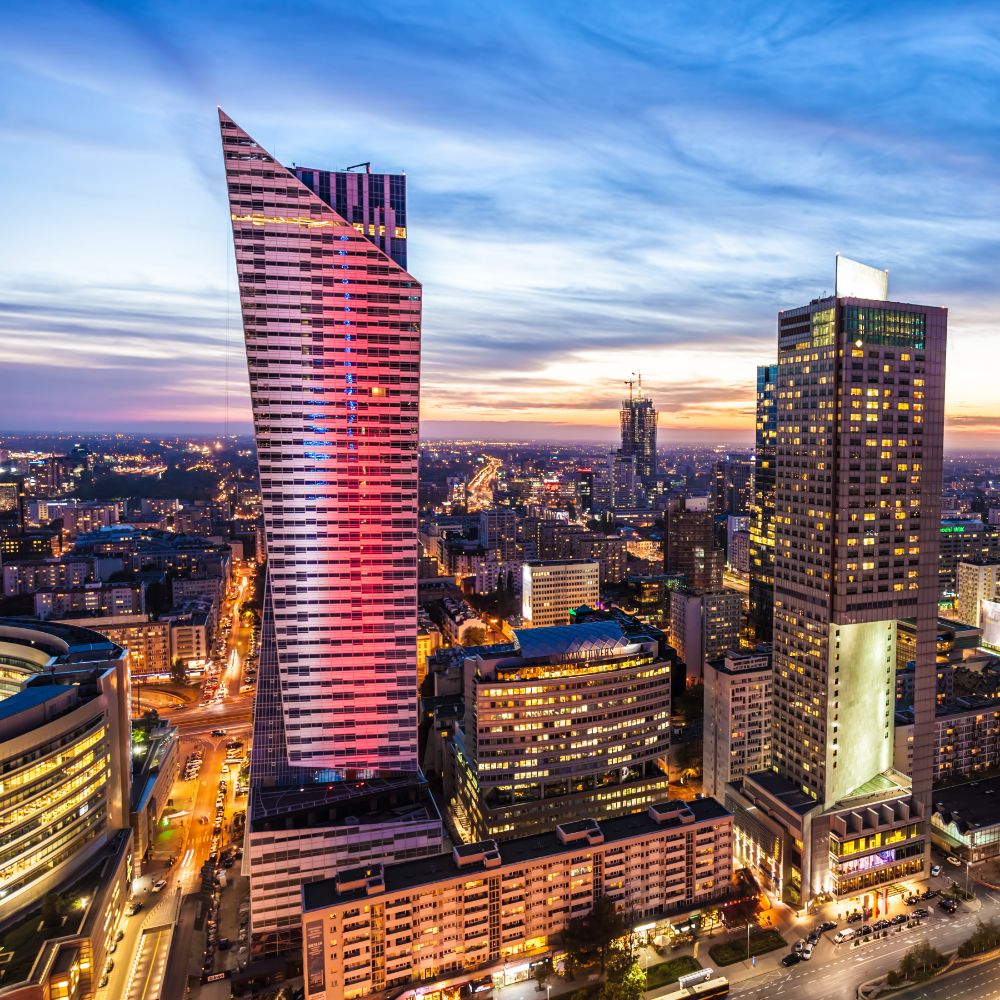Gross Domestic Product
The main driver of economic growth in the previous year was domestic demand (5.4% higher than in 2021). Both consumption and investment demand contributed to the aggregated increase in GDP. Total consumption in real terms increased by 2.2% (this includes a 3.0% increase in household consumption), whereas gross fixed capital formation by 4.5%. However, whereas the growth rate for annual consumer demand decreased in subsequent quarters (Q4 2022 has even produced a negative rate), investment demand – having slowed down in Q3 2022 picked up on the dynamics once more (up to 4.9% y/y).
The heightened uncertainty in the light of the war in Ukraine, rising prices and disruptions in supply chains came with high accumulation of inventories.
The change in inventories contributed 2.8 p.p to the GDP growth throughout 2022. At the same time, net export's negative contribution took away 0.4 p.p.
In 2022, industrial output sold in enterprises employing more than nine workers rose by 10.2% y/y. Due to the tensions in the energy market caused by the war in Ukraine, the greatest growth in production has occurred in mining and quarrying, although growth has been observed in the majority of the main industry groups, in particular in the production of investment goods. Reduced sales and demand, in turn, has been observed in consumer durables. In Q4 2022, the annual growth rate for industrial output sold faltered.
Construction and assembly output grew in 2022 by 6.2% y/y. In all segments of the construction industry, production in 2022 was higher than in the preceding year, and the highest growth was observed in companies specializing in building construction. Sales of renovation works have improved significantly, whereas investment works – only slightly. The highest growth rate was recorded in Q1 2022. Subsequent quarters saw the rate fall with the impact of tightened credit conditions.
In 2022, retail sales were 5% higher than in 2021. What grew primarily was the purchases of necessities (food, clothing and shoes, pharmaceuticals). The sales of cars and fuel, in turn, decreased. The highest growth rate in retail sales was observed in the first half of 2022, which is when there were positive real remuneration dynamics in enterprises, and the sales of necessities was in its greatest degree heightened by the expenses related to the arrival of refugees from Ukraine. The second half of the year saw a reduction.
Labor market and consumption
For the entire 2022, the average monthly gross salary in the corporate sector increased in nominal terms by 13% y/y. In the light of the growing inflation, the purchasing power of thus defined remuneration decreased according to Statistics Poland by 1% y/y (for the first time in 10 years). In the first three quarters of 2022, the growth rate for remuneration in the entire domestic economy was slightly lower than in the corporate sector. At the same time, the average employment in the corporate sector grew by 2.6% y/y, and the figures for the first three quarters of 2022 show that the growth in employment in the domestic economy as a whole was slightly lower to that observed in the corporate sector. The number of registered unemployed people and the registered unemployment rate as at the end of 2022 was lower than in 2021 (5.2% in December 2022 compared to 5.8% in December 2021). (Figures from Statistics Poland)
In December 2022, the seasonally adjusted rate of economic unemployment (according to Eurostat) stood at 2.9%, clearly below the average value for the European Union (6.1%) and the eurozone (6.6%).
Despite the stable situation on the labor market, the consumer confidence in 2022 worsened. What had this effect was the greater uncertainty in the economic environment and lowered real growth rate for remuneration. Household consumption grew by 3% in 2022, following a 6.3% increase in 2021.
Inflation, monetary policy and interest rates
In 2022, the average increase in the consumer price index (14.4% y/y) was the highest since 1997.
Inflation grew gradually throughout the year, and only in November and December the annual price growth rate somewhat decreased. Among others, throughout the year, a high year-over-year growth rate was observed in price of household utilities, transport, and food. The accelerated increase in consumer prices was mainly caused by supply shocks (including the increase in prices of energy products) which raised inflation all across the world, as well as by the relatively week zloty. With the positive output gap, it was relatively easier to transfer the growing costs onto consumers. However, with time, the supply shocks lost their impetus, and the declining demand made for a downward price pressure. It has to be noted that the growing inflation was a global phenomenon; the considerable build-up of demand was accompanied by limited supply of inputs, and concerns about the availability of food and raw materials across the world further arose after the outbreak of the war in Ukraine.
CPI-based inflation being further and further away from the inflation target set by the National Bank of Poland (2.5% y/y) led to a series of significant interest rate raises by NBP. Throughout 2022, the reference rate grew by 5 pp from 1.75% as at the end of 2021 to 6.75% in September 2022. From September 2022 to year-end, the Monetary Policy Council maintained the interest rates at their level.
Public finance
According to the Statistics Poland notification of 21 October 2022, the general government deficit in 2021 was at 1.8% GDP, and general government debt at 53.8% of GDP. Increased income which contributed to a strong reduction of deficit resulted from the economic upturn and high price growth rate. The central government’s activities in 2022 aimed at mitigating the effects of inflation and changes in the tax system (incl. the reduction in PIT from 17% to 12%) became a significant burden for the general government. The public finance sector further bore the costs of supporting refugees from Ukraine. In turn, the high rate at which prices and nominal GDP grew in 2022 contributed to better income for the sector. However, in net terms, the budget outturn will likely be worse than in 2021. In its fiscal notification sent in October 2022 to Eurostat, the government assumed that deficit would grow to 4.7% of GDP in the whole public finance sector. The forecasted sector debt in the budget bill is set at 51.7% of GDP for 2022 (figures consistent with ESA2010). General Government Debt-to-GDP after Q3 2022 was 50.3% of GDP.


